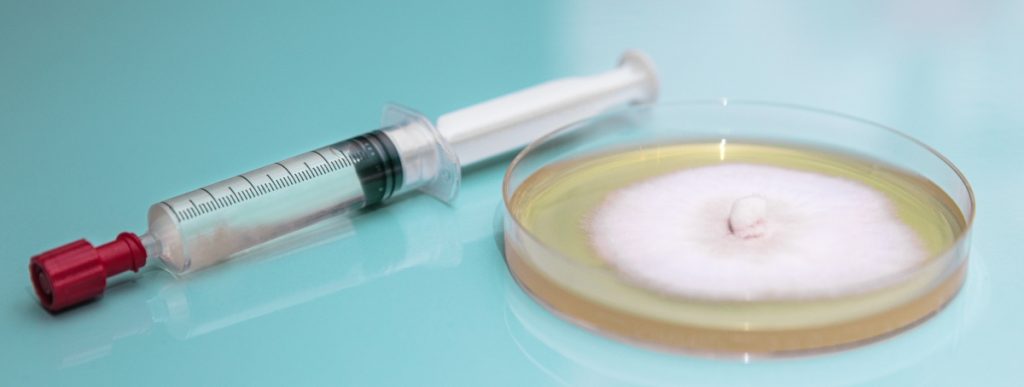Fungi are fascinating, and the more we learn about them, the more we realize how important they are for our health and the planet.
They are some of the most widely distributed organisms on earth, and include mushrooms, yeasts, rusts, smuts, mildews, and molds.
Fungi that produce delicious gourmet or medicinal mushrooms are some of the most popular fungi, but there is more to them than mushrooms.
In fact, the mushrooms are just the fruiting bodies of a much larger organism made up of a network of delicate mycelium.
Read on to discover what mushroom mycelium is, why it’s important, its uses and health benefits and how to grow mushroom mycelium.
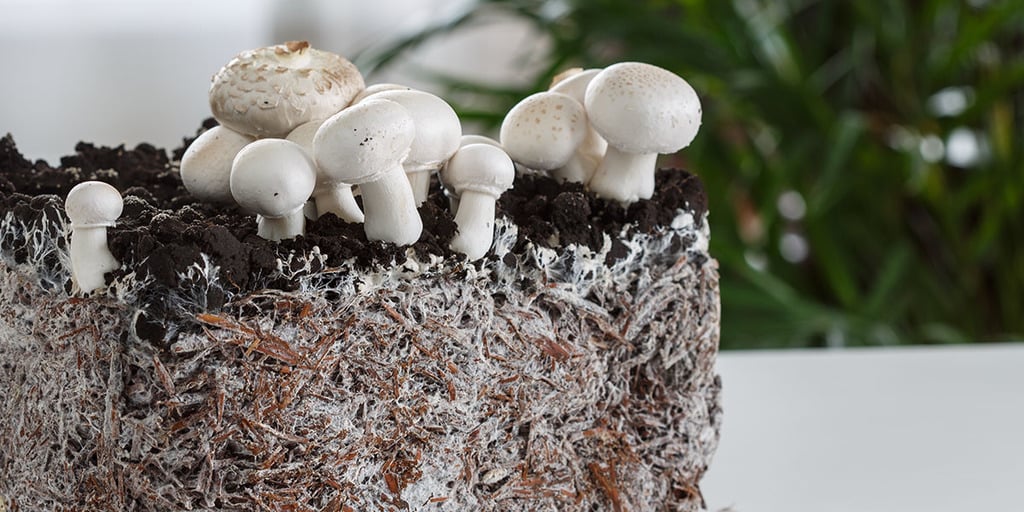
What is Mushroom Mycelium?
Mushroom mycelium is the thread-like body of a fungus that’s often hidden underground or inside rotting logs and stumps.
The mycelium is the main part or body of the fungus, and the visible mushrooms are the fruiting bodies that it forms to assist with reproduction.
Mycelium consists of thousands of delicate, thread-like hyphae that join together to form an underground network of long fibers that grow through organic matter and obtain nutrients.
Like humans, fungi need to get nutrients from their surroundings to grow, but unlike humans, fungi digest their food externally.
Mushroom mycelium releases enzymes that break down the organic material around them. They then absorb the small particles through their cell walls.
Mushroom mycelium is the longest-living part of a fungus. It can remain dormant for several years, waiting for the right conditions to produce mushrooms and reproduce.
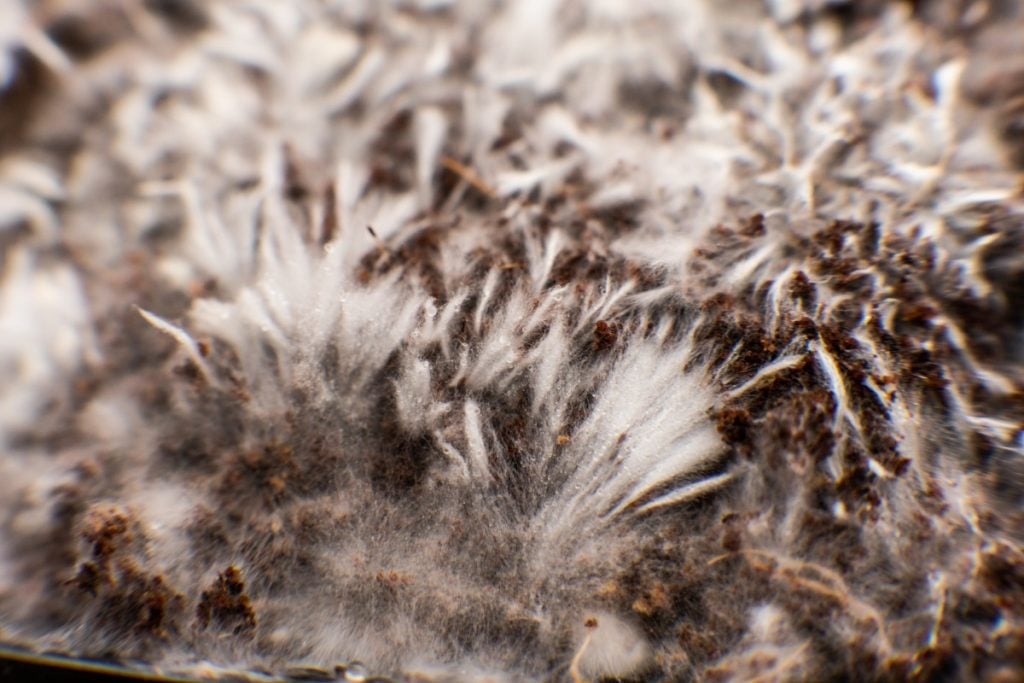
Do all Mushrooms Have Mycelium?
Yes, all mushrooms have mycelium as they are the fruiting bodies of living fungi, and mushrooms themselves consist of tightly bunched mycelium.
But, although all mushrooms come from fungal mycelium, not all fungi produce mushrooms.
Do Mushrooms Have Roots?
Mushrooms don’t have roots. The root-like portion of the fungus found underground is not its roots. It’s the main body of the fungus, consisting of an intricate network of threadlike mycelium.
Although mycelium may sometimes look like plant roots, they’re not the same, but they often work together, forming mutually beneficial relationships called mycorrhizae.
Plant roots and mycelium both absorb nutrients and help anchor the organism, but their other roles are very different because of how they get their nutrients.
Plants produce food via photosynthesis, but fungi need to get the nutrients they need from the organic matter around them.
Here are some of the differences between plant roots and mycelium:
- Mycelium spreads further and is much longer than root hairs.
- Hyphae can absorb nutrients and water along their entire length. Root hairs only absorb nutrients at the tips.
- Hyphae can absorb soluble and insoluble nutrients. Root hairs are limited to absorbing soluble nutrients.
- Mycelium feeds on (digests) dead material. Plant roots absorb available water and nutrients.
- Plant roots don’t grow and spread in search of nutrients, whereas mycelium does.
Is Mycelium Fungus Edible?
Yes, some mycelium fungus is edible, and like edible mushrooms, it provides many health benefits.
But, like mushrooms, not all mycelium is safe to eat, and you need to ensure that you only eat mycelium from edible strains of mushrooms.
Is mycelium harmful to humans? Mycelium grown for human consumption is not harmful to humans, and many health supplements contain mushroom mycelium.
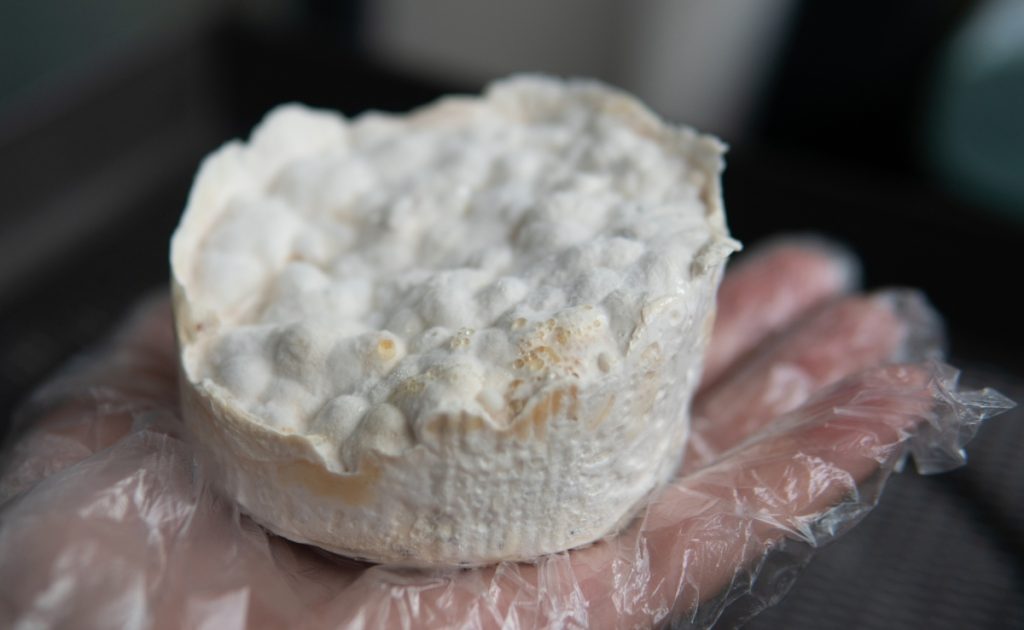
Why is Mycelium Important?
Fungi play a vital role in forest ecosystems as their mycelium helps decompose dead and decaying organic matter making nutrients available for trees and plants.
Some fungi are mycorrhizal, meaning they have a symbiotic relationship with host plants.
These fungi provide host plants with nutrients in exchange for the simple sugars the plants produce through photosynthesis.
As mushroom mycelium absorbs nutrients and grows, it creates an extensive underground network that links fungi and plants.
In fact, it’s believed that the mycelial network is so important that without it, ecosystems would fail.
In 1997 Prof Suzanne Simard came up with the term “Wood Wide Web” when she realized that trees were communicating with each other using mycorrhizal networks.
Mycelium networks allow plants of different species to share nutrients and warn each other about droughts, pests and diseases.
The role mushroom mycelium plays in nature is not the only reason it’s important. It also has several innovative applications in our world.
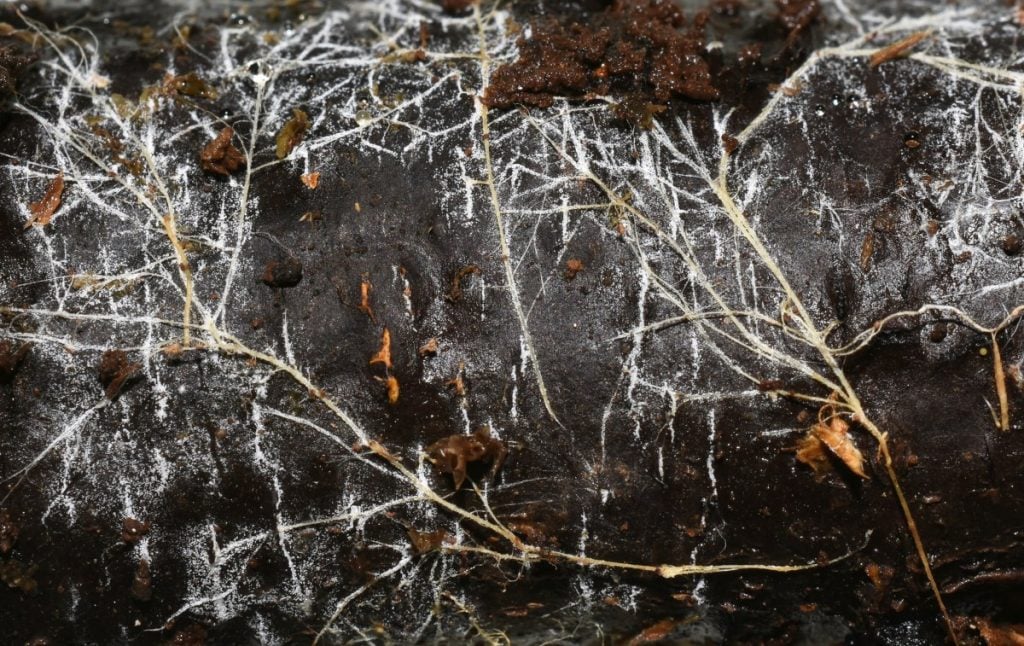
6 Innovative Uses of Mushroom Mycelium
Mushroom mycelium is an amazing natural material that’s not only strong but also eco-friendly, sustainable and renewable.
Scientists and inventors are constantly discovering new and innovative ways to use mushroom mycelium. Here are a few of them:
1. Meat Substitutes
Mycelium-based food products replicate the fibers and consistency of meat, and it only takes around 9 days to grow an edible product.
Producing healthy, nutrient-dense food from mycelium is better for us and the planet.
As the mycelium growing process emits less carbon and requires less space and water than traditional meat production.
Mycelium meat substitutes are allergen-free and a great source of protein as they contain all 9 essential amino acids.
Some examples of mycelium meat substitutes are delicious mycelium bacon from My Forest Foods and steaks and cutlets from Meati.

2. Durable Textiles
People are using special techniques to grow mycelium and transform it into materials that provide eco-friendly alternatives to synthetic textiles and leather.
The end products are durable textiles that look and feel like animal leather.
Examples of these textiles are a material called Mylo from Bolt Threads and a leather alternative from MycoWorks called Reishi that’s made using reishi mushroom mycelium.
Designers have already used mycelium leather to make shoes, bags, clothing and other products.
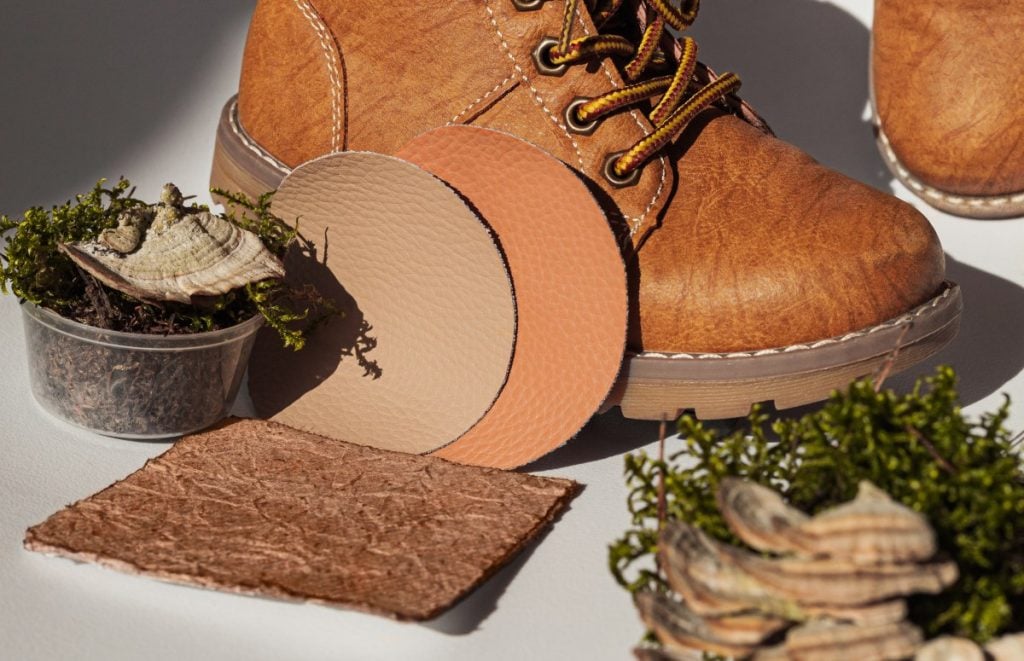
3. Eco-Friendly Packaging
Mushroom® packaging, an innovative new packaging solution from Ecovative, is grown instead of manufactured.
This unique packaging uses a substrate of hemp and mycelium grown into custom molded packaging that’s 100% biodegradable.
It provides an exciting alternative to plastic and polystyrene as it’s strong, light, fire and water resistant and composts in under a month when added to the soil.
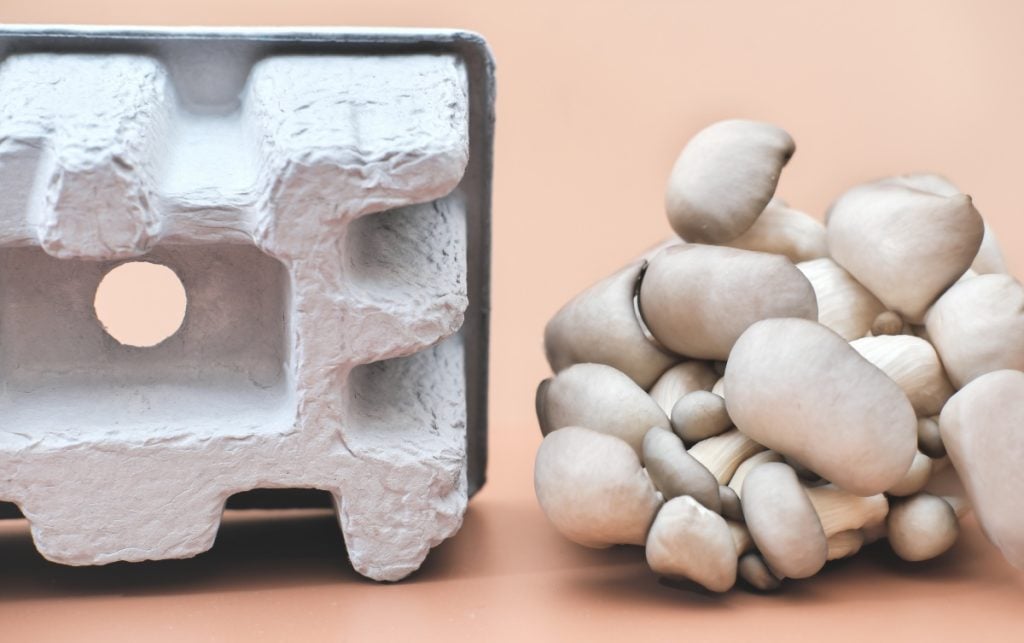
4. Sustainable Building Materials
Scientists have also made low-cost, eco-friendly building materials using mycelium and agricultural waste.
Mogu has a range of decorative mycelium-based acoustic panels with impressive sound absorption properties that are some of the first commercial mycelium-based products on the market.
And UK-based Biohm has produced safe and healthy mycelium insulation panels with thermal and acoustic insulation applications.
5. Coffins
Dutch researcher Bob Hendrikx created the living cocoon, a coffin made from mushroom mycelium that’s grown in 7 days using local agricultural waste ingredients.
Unlike some mycelium products, where producers use heat to kill the mycelium in the end product, mycelium coffins contain dormant living mycelium.
When you bury the coffin, groundwater re-activates the mycelium, and the coffin breaks down in 45 days.
These coffins also host bacteria and microorganisms that help neutralize toxins in the body, enabling people to enrich the soil with their nutrients.
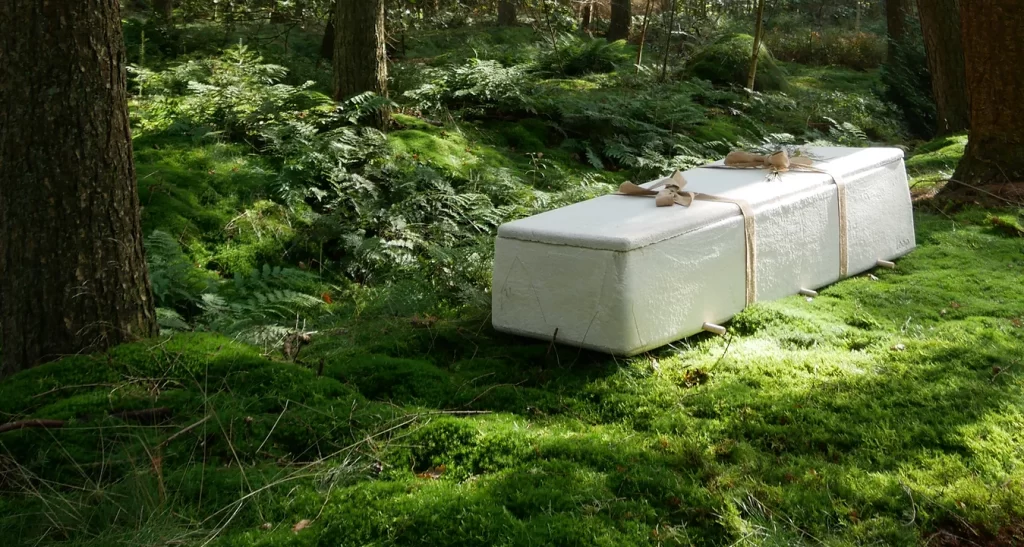
6. Mycoremediation
Mycoremediation is a method used to repair contaminated soils using mushroom mycelium to break down pollutants.
Mushroom mycelium releases enzymes that convert organic compounds like leaves and wood into soluble nutrients.
These enzymes can also break down pollutants and chemical contaminants, like pesticides, hydrocarbons and oil spills.
Oyster mushroom mycelium is one of the best for mycoremediation and excellent at breaking down pollutants.
Australian researchers are using oyster mushroom mycelium to break down cigarette butts and solve one of the world’s biggest litter problems.
Fun mushroom fact: Oyster mushroom mycelium can also turn plastic into food.
Katharina Unger of LIVIN Studio grew oyster mushroom mycelium around pods of edible agar containing pieces of plastic.
The mycelium completely digested the plastic and formed small mycelium snacks.
What Are The Health Benefits of Mycelium?
Mushroom fruiting bodies and mycelium both have high nutritional values, and most are low in fat and rich in dietary fiber and protein.
Although mushrooms consist of mycelium, supplements made from mushroom fruiting bodies are not the same as supplements made from mycelium.
Some argue that fruiting bodies are more concentrated and offer more beneficial compounds than mycelium.
But others feel that both offer health benefits and the immune-boosting properties of mycelium are exceptional.
You cannot separate mushroom mycelium from the grain substrate it grows in, so mycelium supplements will always include some kind of grain or starch.
Some argue that mycelium supplements are mostly grain with only a little mycelium, but a study has shown that both the mycelium and the substrate offer immune-boosting benefits.
In the wild, mycelium creates its own immune response that supports the health of the fungus and the surrounding ecosystem.
And, when used in supplements, it’s believed that humans can also enjoy the health-supporting benefits of mushroom mycelium.

How to Grow Mushroom Mycelium
To grow mushroom mycelium, you’ll need mushroom spores, tissue or stem butts and organic material for the mycelium to feed on.
There are several ways to grow mycelium, and it’s the first phase of growing delicious gourmet or medicinal mushrooms.
We recommend beginner mushroom growers skip this part of the mushroom growing process and buy a ready-to-fruit mushroom grow kit or mushroom grain spawn.
But if you want to try your hand at growing mycelium, here are some methods you can use:
Stem Butt Method

This method of growing mycelium is perfect for easy-to-grow species, like oyster mushrooms, and a fun project for beginner mushroom growers.
It’s a cheap and easy way of growing mycelium that doesn’t need expensive equipment. But it’s less reliable than other methods and often has lower yields.
The stem butt method involves taking the bottom part of fresh oyster mushroom stems and growing mycelium from them onto cardboard.
Our article, “How To Grow Your Own DIY Mushroom Spawn,” will take you through this method of growing mycelium step by step.
Mushroom Tissue Method
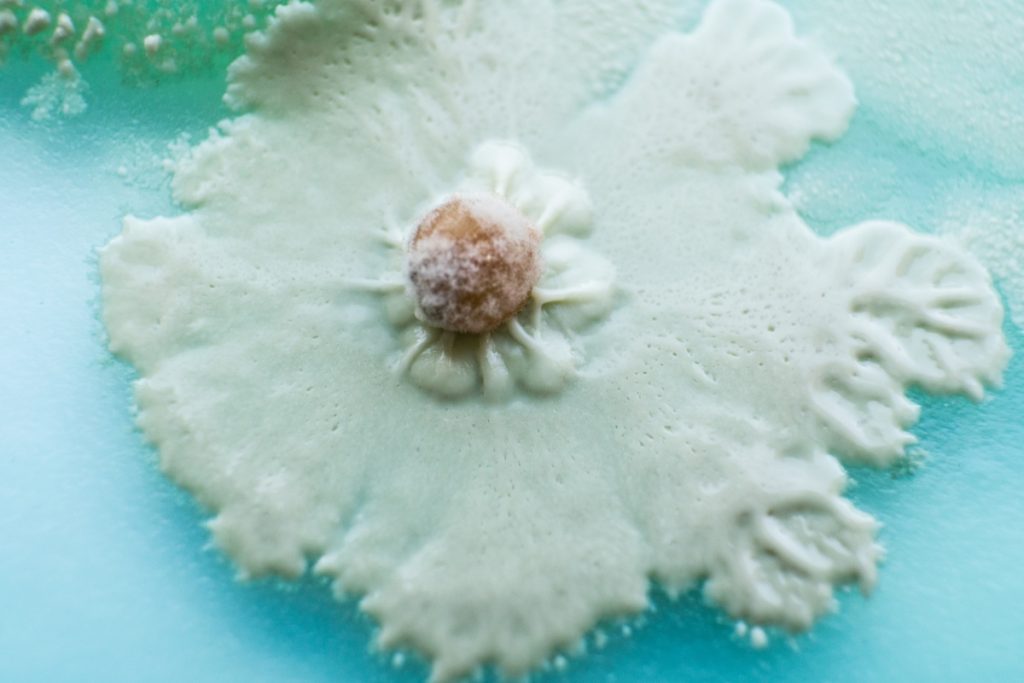
Mushrooms are essentially dense mycelium, and even after harvesting, the mycelium that makes up the mushroom’s flesh is still alive and able to reproduce.
If you take some living tissue from a fresh mushroom and place it in a nutrient-rich growing medium, the mycelium will grow and spread throughout the growing medium.
Commercial mushroom growers often use this method of growing mycelium as you get a clone of the original mushroom with all the same characteristics.
There’s more than one way to clone mushrooms, but mushroom farmers commonly use agar plates as they’re one of the best ways to avoid contamination.
After the mycelium has colonized the agar plate, it’s usually added to a grain like rye, rice, millet or wheat to create grain spawn. This is then used to inoculate bulk substrates and grow mushrooms.
For step-by-step instructions on how to grow mycelium and clone mushrooms using agar, take a look at our article, “How to Clone Mushrooms: A Step by Step Guide.”
Mushroom Spore Method
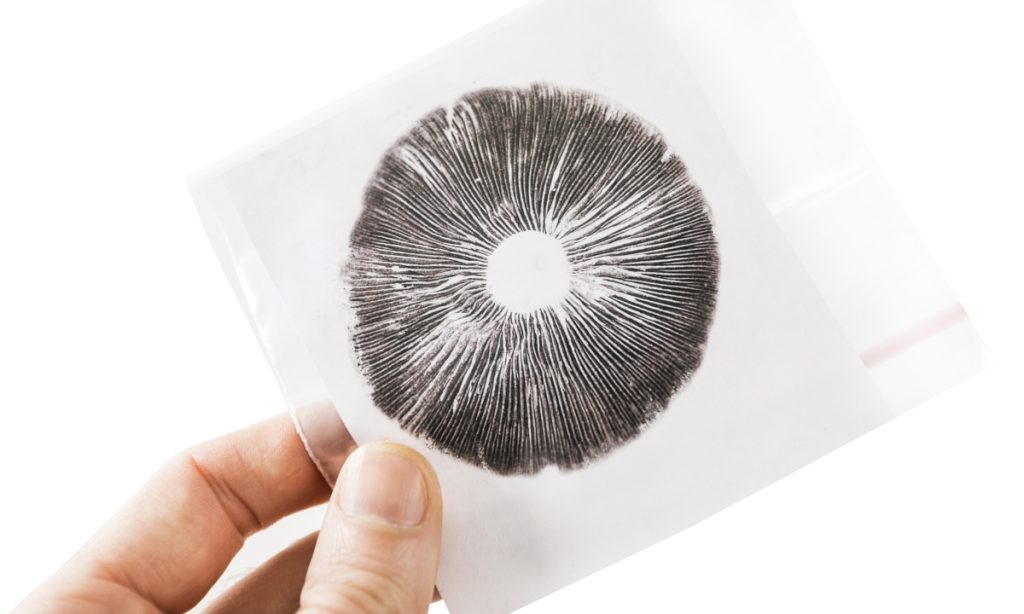
Another way to grow mycelium is using mushroom spores. And this is how many mushroom species reproduce in the wild.
This method involves making a spore print from a fresh mushroom and then placing the spores in a nutrient-rich growing medium.
When you place mushroom spores in the right conditions, single-cell hyphae grow, and when these hyphae merge to form mycelium, they create new mushroom strains.
These strains will have similar traits to the parent mushroom, but it’s impossible to predict characteristics like colonization speed, size and color of the fruiting body, etc.
As the results are unpredictable, commercial mushroom growers prefer to clone mushrooms from proven existing strains.
Where to Buy Mushroom Mycelium
You can buy mushroom mycelium online, and it’s sold at different stages of development as mushroom culture or spawn.
Mushroom cultures usually contain actively growing mycelium in a liquid solution in a sterile syringe.
This culture is then added to a sterile growing medium to create mushroom spawn.
Mushroom spawn is organic material that has mycelium growing in it. It’s often used to hold mushroom mycelium until it’s transferred into another mushroom substrate to grow mushrooms.
Mushroom spawn can come in different forms, including grain, sawdust or plug spawn, and each has specific uses.
Grain spawn is most often used to inoculate substrates for indoor mushroom cultivation. While sawdust spawn works well when growing mushrooms outdoors in mushroom beds.
Plug spawn is specifically for inoculating logs, but you can also use sawdust spawn when growing mushrooms outdoors on logs.
Which mycelium is best for you will depend on your experience, the type of mushrooms you want to cultivate and how much time you have.
An impressive range of mushroom species are available as mycelium cultures, but these are best used by more advanced mushroom growers.
If you’re new to mushroom growing, we recommend growing oyster mushrooms, one of the easiest mushrooms to grow, and purchasing mushroom spawn from a reputable supplier.
Final Thoughts
Mushroom mycelium is an amazing natural material that’s eco-friendly, sustainable and good for our health.
There are many innovative ways to use mushroom mycelium to help the planet and reduce toxic waste and pollutants.
But, in our opinion, one of the best uses of mushroom mycelium is to grow healthy and delicious gourmet mushrooms.
To learn more about growing mushrooms, visit our Mushroom Growing Hub or sign up for one of our mushroom cultivation courses.
